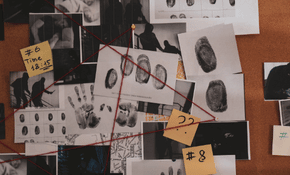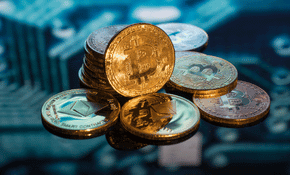What is Social Security Number (SSN)?
The Social Security Number (SSN) has emerged as a key component of user identification in a connected and digitally advanced society. The SSN was first created to keep track of social benefits, but it has since developed into a distinctive identification number that is widely used in a variety of industries, including finance, government services, healthcare, and more. The historical background, significance, and difficulties surrounding the usage of SSNs for customer identification are all covered in this article. It also explores the dangers of using SSNs, the safeguards for their security, and prospective substitutes for a safer identity environment.
Historical Context of SSN
During the Great Depression, the Social Security Act included the SSN for the first time in the United States in 1936. The main goal was to make it possible to monitor American residents' incomes and social assistance eligibility. The SSN's use eventually went beyond its original intent and it became a crucial identifier for many different facets of personal identification and record-keeping.
Understanding the Structure of SSN
The SSN is a nine-digit number that is typically shown as XXX-XX-XXXX, with each segment denoting a different meaning. The SSN's first three digits identify the country or region in which it was granted, the next two reflect the group number, and the last four represent the individual account number. Recognizing legitimate SSNs and telling them apart from invalid ones requires understanding the structure.
SSN's Role in Customer Identification
Due to its uniqueness, the SSN is essential for identifying customers. It acts as a trustworthy method of differentiating one person from another, allowing multiple institutions to maintain accurate data and avoid identity confusion. SSNs are used by banks and other financial institutions for credit reporting and loan applications, and by government organizations for taxation, social benefit programs, and other purposes.
Risks and Challenges Associated with SSN Usage
The SSN does have several weaknesses despite being widely used. The misuse of SSNs by bad actors has led to serious worries about identity theft and fraud. Large amounts of SSNs may be exposed in data breaches, which could result in financial losses and harm to people's privacy. Additionally, the use of SSNs in a variety of industries can introduce a risk of surveillance, raising concerns about the privacy of personal data.
SSN Protection and Security Measures
Both the public and private sectors have put in place numerous security-enhancing measures after realizing how important it is to protect SSNs. Strict guidelines on data management and SSN usage are imposed by laws and regulations including the Gramm-Leach-Bliley Act and the Fair and Accurate Credit Transactions Act. SSNs are no longer saved or transferred in plain text thanks to the widespread adoption of encryption and data security standards. In order to add an extra layer of security and prevent unwanted access to sensitive data, two-factor authentication (2FA) has grown in popularity. Additionally, viable methods to increase security include the investigation of SSN replacement technology and biometric authentication.
Alternatives to SSN for Customer Identification
As long as SSN security worries exist, there is increased interest in investigating different identification strategies. By using unique, randomized identities for each customer, Unique Customer identities (UCI) can offer a more secure method. Tokenization enables the creation of transient, disposable identifiers, lowering the possibility of identity theft. The Public Key Infrastructure (PKI) makes use of cryptographic methods to authenticate client identities securely. Furthermore, some supporters advocate for blockchain-based identity systems, where decentralized networks might lessen data risks.
The SSN has an impact that transcends national boundaries. For customer identification, other nations use SSN-like numbers, each with its own difficulties and ramifications. Concerns regarding international data sharing and privacy emerge as the global economy becomes more interlinked, driving the need for identity system harmonization.
To secure SSNs, institutions must install security measures, but it's critical to find a balance between security and client convenience. Excessive security precautions may hinder customer interactions and adversely affect user experience. With the addition of Multi-Factor Authentication (MFA) solutions, users can easily validate their identity while still receiving high levels of security.
Future of SSN in Customer Identification
Looking ahead, the adoption of reforms and innovations will determine the use of SSNs in consumer identification. The ability of artificial intelligence (AI) to spot trends and abnormalities may significantly strengthen the security of SSNs. The identification environment will probably change as a result of ongoing research and development into alternative identification technologies.
It continues to be a crucial component of customer identification, enabling a wide range of crucial services in the connected world of today. The SSN has evolved since it was first used to administer social assistance during the Great Depression, becoming the main identification for financial, governmental, and healthcare services. This progress has not, however, been without difficulties. The widespread usage of SSNs has made people more vulnerable to hazards including identity theft, fraud, and privacy violations, as this article has revealed. The surge in data breaches and the digitization of personal information highlight the urgent need for strong security measures to safeguard sensitive data.
Thankfully, both public and commercial organizations have realized the value of protecting SSNs. To strengthen the security of client data, stricter laws, encryption protocols, and multi-factor authentication techniques are being used. Additionally, cutting-edge solutions for a safer future include biometric authentication and blockchain-based identity systems. While there may be some challenges on the way, it is critical to balance client convenience and security. The identification environment can change in the direction of a more robust and privacy-focused ecosystem by implementing proactive measures and utilizing the potential of emerging technologies. As the digital world develops, so too must our strategy for safeguarding private data. We can ensure that consumer identification is secure by tenaciously tackling the issues surrounding SSN usage, enabling people to join with confidence in a connected world while protecting their most priceless asset—their identity.







